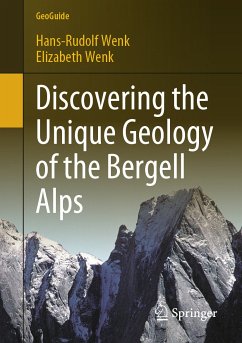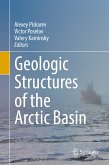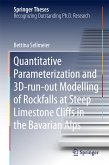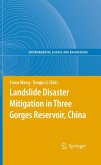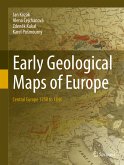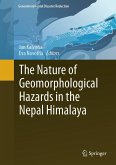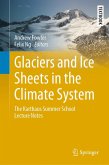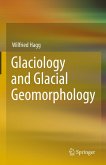

Alle Infos zum eBook verschenken

- Format: PDF
- Merkliste
- Auf die Merkliste
- Bewerten Bewerten
- Teilen
- Produkt teilen
- Produkterinnerung
- Produkterinnerung

Hier können Sie sich einloggen

Bitte loggen Sie sich zunächst in Ihr Kundenkonto ein oder registrieren Sie sich bei bücher.de, um das eBook-Abo tolino select nutzen zu können.
This book aims to introduce scientists and educated laymen to the fascinating geology of the Bergell Alps, first with some background information on geology, tectonics, minerals and rocks and then to lead readers on excursions to observe geological features in the field. We believe the best way to make readers familiar with local geology is to lead them to intriguing outcrops. Such books are common in North America, but missing in Europe, particularly for the Alps. With this work, we use hands-on experience at a series of sites to educate readers how individual outcrops, moraines, landslides…mehr
- Geräte: PC
- ohne Kopierschutz
- eBook Hilfe
- Größe: 14.77MB
![Geologic Structures of the Arctic Basin (eBook, PDF) Geologic Structures of the Arctic Basin (eBook, PDF)]() Geologic Structures of the Arctic Basin (eBook, PDF)69,95 €
Geologic Structures of the Arctic Basin (eBook, PDF)69,95 €![Quantitative Parameterization and 3D-run-out Modelling of Rockfalls at Steep Limestone Cliffs in the Bavarian Alps (eBook, PDF) Quantitative Parameterization and 3D-run-out Modelling of Rockfalls at Steep Limestone Cliffs in the Bavarian Alps (eBook, PDF)]() Bettina SellmeierQuantitative Parameterization and 3D-run-out Modelling of Rockfalls at Steep Limestone Cliffs in the Bavarian Alps (eBook, PDF)73,95 €
Bettina SellmeierQuantitative Parameterization and 3D-run-out Modelling of Rockfalls at Steep Limestone Cliffs in the Bavarian Alps (eBook, PDF)73,95 €![Landslide Disaster Mitigation in Three Gorges Reservoir, China (eBook, PDF) Landslide Disaster Mitigation in Three Gorges Reservoir, China (eBook, PDF)]() Landslide Disaster Mitigation in Three Gorges Reservoir, China (eBook, PDF)161,95 €
Landslide Disaster Mitigation in Three Gorges Reservoir, China (eBook, PDF)161,95 €![Early Geological Maps of Europe (eBook, PDF) Early Geological Maps of Europe (eBook, PDF)]() Jan KozákEarly Geological Maps of Europe (eBook, PDF)32,95 €
Jan KozákEarly Geological Maps of Europe (eBook, PDF)32,95 €![The Nature of Geomorphological Hazards in the Nepal Himalaya (eBook, PDF) The Nature of Geomorphological Hazards in the Nepal Himalaya (eBook, PDF)]() The Nature of Geomorphological Hazards in the Nepal Himalaya (eBook, PDF)97,95 €
The Nature of Geomorphological Hazards in the Nepal Himalaya (eBook, PDF)97,95 €![Glaciers and Ice Sheets in the Climate System (eBook, PDF) Glaciers and Ice Sheets in the Climate System (eBook, PDF)]() Glaciers and Ice Sheets in the Climate System (eBook, PDF)73,95 €
Glaciers and Ice Sheets in the Climate System (eBook, PDF)73,95 €![Glaciology and Glacial Geomorphology (eBook, PDF) Glaciology and Glacial Geomorphology (eBook, PDF)]() Wilfried HaggGlaciology and Glacial Geomorphology (eBook, PDF)53,95 €
Wilfried HaggGlaciology and Glacial Geomorphology (eBook, PDF)53,95 €-
-
-
Dieser Download kann aus rechtlichen Gründen nur mit Rechnungsadresse in A, B, BG, CY, CZ, D, DK, EW, E, FIN, F, GR, HR, H, IRL, I, LT, L, LR, M, NL, PL, P, R, S, SLO, SK ausgeliefert werden.
- Produktdetails
- Verlag: Springer International Publishing
- Seitenzahl: 157
- Erscheinungstermin: 8. Februar 2024
- Englisch
- ISBN-13: 9783031307386
- Artikelnr.: 69951007
- Verlag: Springer International Publishing
- Seitenzahl: 157
- Erscheinungstermin: 8. Februar 2024
- Englisch
- ISBN-13: 9783031307386
- Artikelnr.: 69951007
- Herstellerkennzeichnung Die Herstellerinformationen sind derzeit nicht verfügbar.
Elizabeth (Lizzy) Wenk is a plant ecologist with a PhD from UC Berkeley, investigating the distribution and physiology of alpine plants in California's Sierra Nevada. She works at the University of New South Wales, Sydney, Australia, broadly interested in plant functional traits. She pursues a second career as a hiking guide author for California's Sierra Nevada, having written the definitive book to the famous John Muir Trail and authoring award-winning hiking guides that cover the length of the mountain range. She has become familiar with Alpine geology at an early age on many hikes with her father. In this book her focus has been to prepare the complex multilayered digital maps that accompany every excursion.
